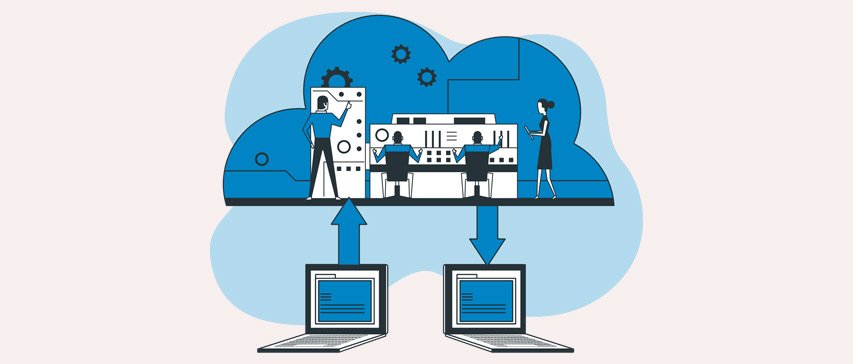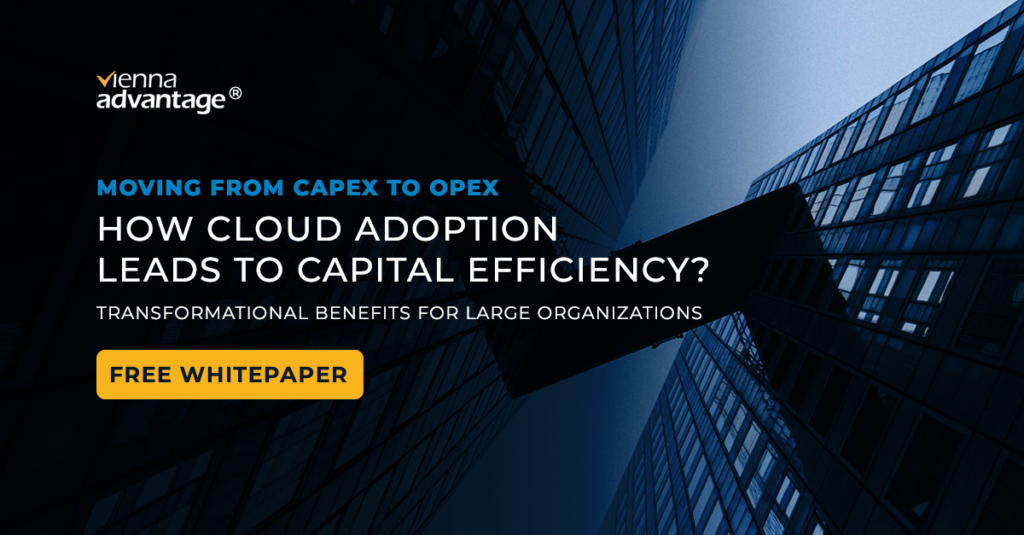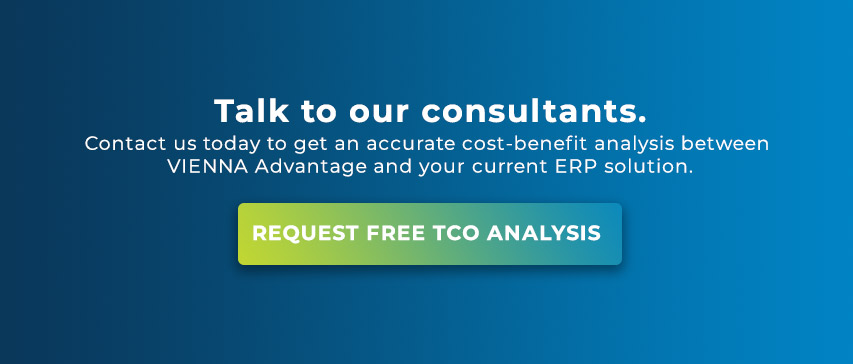
Operating modern ERP systems in the cloud come with several benefits. However, upgrading ERPs is a complex process and hence, requires substantial planning as well as extensive strategies for implementation, to enjoy positive results. Any company that fails in addressing the intricacies of cloud ERP projects may put themselves at risk, and may even suffer from expensive disruptions of business services.
Both IT and business leaders must work in tandem to create a transition strategy spreading over multiple years and covering several key phases of the planning of the upgrade as well as implementation.
#1: Public vs Hybrid: choose the right cloud for your ERP

Once a company chooses a cloud ERP system, the second decision to make is to determine where it must run. As the traditional and advanced cloud benefits are very powerful, the majority of companies prefer to refrain from running their upgrade in a data centre that is on-premises.
However, it is still crucial to determine if it must be run in a cloud that is completely public or one that is a combination of public and private models of cloud, which is referred to as a hybrid cloud. The majority of cloud veterans recommend understanding their immediate requirements as well as future vision pertaining to digital infrastructure, before making a decision.
For cloud ERP, public clouds act as good long-term choices, since they offer traditional and advanced capabilities benefits, while they are consistently pressurized into working on innovations. According to the manufacturing and logistics CIO, public clouds tend to avoid a few challenges of IT management that are common in hybrid clouds. Another primary factor is the importance of maintaining optimal cybersecurity.
A former chemical industry CIO states that they did not want to operate their ERP in a hybrid environment as running sit simultaneously in two different places can be complex and hence more risky, paving the way for more potential to cause errors or failures. Moreover, he also stated that the Chief Information Security Officer and other security personnel played a crucial role in analyzing the relative risks of public and hybrid clouds, while they also vetted the cloud providers’ ability to assist the security policies and procedures of the company.
Hybrid clouds are also less beneficial because they offer delayed access to modern technology. Since external factors tighten the capital, it is possible for IT departments to push refreshing their hardware longer than is ideal. When choosing to stick to outdated technology, there are several costs associated, and it won’t be possible to make the most of the innovations that are being introduced by the vendors. But in the case of companies looking to make the most of current IT investments, hybrid clouds might act as proper alternatives. It is good to select a cloud provider, which is equipped to assist their cloud as well as on-premises environments with open source technologies in such cases, in order to modernize legacy applications and wrap workloads in software containers. It is also important to coordinate the clouds.
#2: Create a robust business case to shift ERP to the cloud

Find opportunities to modernize business processes. Begin this step by reevaluating existing workflows. With largescale upgrades, companies can remove inefficiencies that were created with time by substituting them with the recent best practices of the industry. Moreover, companies must consider the opportunities available to create business value, including the creation of actionable insights, decreased costs, and better competitive advantages.
In one of our cloud ERP implementations where two chemical companies were merged, IT managers leveraged the templates of best practices that VIENNA Advantage Enterprise Cloud ERP offered to decrease the complexity present in their business processes. The business units in the company were challenged to discuss the importance of offering over a dozen diverse types of order, although the best practices in the industry recommend opting for one or two order types. The business processes complexity makes it more difficult to automate them efficiently.

#3: Evaluate risks of implementation and devise steps to mitigate potential problems

In-depth analyses can be offered by third-party consultants who are experts when it comes to ERP upgrades and cloud projects. Worth, the former CIO of the remanufacturing company, stated that in case a company wants to recruit a consultant, it is important to find firms providing guidelines as well as checklists of possible issues and provide proven steps to resolve such problems. A few cloud providers provide effective resources as well, including execution templates as well as best practices to enhance security and integrate the platform with associated applications.
#4: Assess public cloud providers and their capabilities for digital transformation and cloud ERP support

Several cloud providers tend to offer table stakes features, including computing as well as storage resources on demand. However, in terms of advanced features, there are obvious differences. Thus, it is important for executives of an enterprise to understand their requirements and then evaluate if a cloud provider is equipped to fulfil them. It is important for the evaluation checklist to include every cloud vendor’s ability to:
- Decrease capital expenditures
- Provide scalability as well as IT resources on-demand
- Offer sophisticated analytics
- Enhance cybersecurity constantly
- Improve capabilities related to disaster recovery
- Offer expertise in cloud and digital transformation
- Provide assistance to ongoing technology innovation
In the case of VIENNA Advantage Cloud ERP, it is important for companies to assess the track record of the provider in terms of supporting the platform, advanced analytics capabilities, the capability of delivering advanced cybersecurity services, and several other features that are mandatory for the enterprise. Then, each of them must be assessed and weight in terms of their organizational significance, and every provider should be rated to determine the best provider. Once the company devises a shortlist of top candidates, it must perform proofs of concept by running various aspects of the cloud ERP application in each of the available options. Companies must also consider the costs, and this involves extensive work and not mere comparison of the pricing of various service providers. The kinds of virtual machines being used in the clouds may lead to differences in prices, along with other variables such as the amount of time for which they run as well as the gigabytes specified.
#5: Devise a change management plan to mitigate disruption

According to IT executives, the technical challenges related to upgrades in ERP as well as shifts to the cloud are slowly decreasing. Since there is rapid maturation of the market and the cloud owners are providing adequate technologies and utilities, the process is practically hassle-free. In order to make this shift even easier, engage with the cloud provider in order to mitigate a prevalent issue, wherein seamless flow of information is involved, particularly between the public cloud and applications present on-premises and function in tandem with the cloud ERP platform. A few related modules are third-party warehouse or supply-chain management systems as well as proprietary research and development programs, which tend to share financial information with the ERP application. It is advised to think comprehensively and understand applications beyond the VIENNA Advantage platform, which are important to plan and check for quality, along with banking systems connected to the ERP application.
To confirm whether it works, an updated integration layer is required with a good testing plan. However, it is easier to address such technical issues when compared to the problems emerging in relation to the management of change for both business leaders and consumers. For business operations, transformation is less rooted in technology and more inclined towards change management, according to Sanjay Choubey, a consultant working as an interim leader of business transformation programs for large enterprises. When the business processes are altered with the objective of removing processes that are obsolete or redundant, one or more individuals must translate these changes and work along with the organizational leaders in order to ensure that the changes are properly comprehended, communicated, as well as promoted.
In order to enjoy such buy-in from business leaders, it is crucial for a senior employee, such as a vice president of business transformation, to work with the vice presidents of marketing, manufacturing, supply chain, and other spheres. There is a need for the frontline staff members to adjust to these changes too. For instance, an employee who is required to become an VIENNA Advantage configurator by leaving their role as a programmer must develop a new skill set.
It is important to train people and inculcate new skill sets before the move from the legacy system is made to ensure they are not coerced into an unfamiliar environment wherein they cannot address any issues that emerge rapidly. Since cultural changes can cause disruption, companies must consider the option of transitioning each department to VIENNA Advantage and the cloud independently, and one at a time. It is recommended to maintain a previous ERP version that the company can roll back to till cloud ERP upgrade is fully complete. That is because minor issues may arise because of overlooking something, such as a security issue that was not properly addressed or improperly setting up security measures, which prevents employees from logging in to the system. Thus, it is a good idea for companies to gradually shift towards this new system and plan in a way that ensures that the complete shift is implemented in one or two years.
Act While There’s Still Time
Today, digital disruption is affecting practically every business sector, and hence, visionary executives are leaning towards transforming their companies to stay relevant in their markets and to enjoy a competitive advantage. To most companies, this involves the modernization of their core ERP platform and shifting it to the cloud for enhanced management of costs, better agility, and quicker access to innovations.
However, there is a need to plan comprehensively and devise an implementation strategy covering several issues related to technical and change management spheres. Leaders of enterprises can start addressing these problems by referring to the emerging best practices proposed by experts of transformation projects. As there is a rise in competitive pressures, decrease in the support for legacy ERP applications, and the peaking of demand for technical expertise, procrastination this shift may lead to negative consequences. Today, CIOs must act to create a strong foundation, which can support them in their journey towards success. This is an ideal time to shift to VIENNA Advantage Cloud ERP solution.
